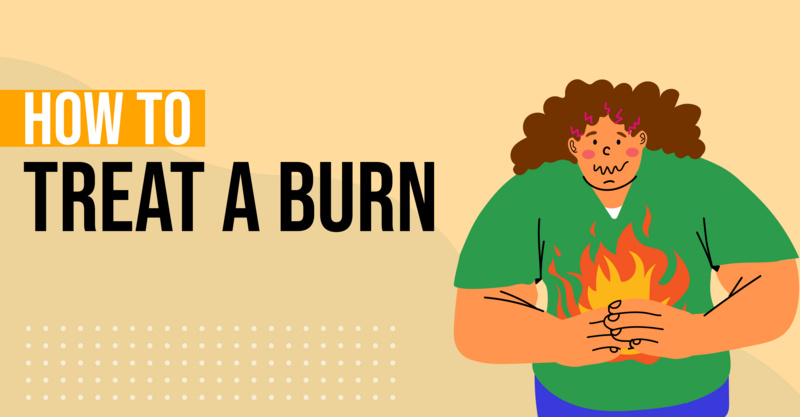Key Points
- The term "walk-in clinic" is a broad term that can refer to various healthcare providers, including urgent care centers, retail clinics, and emergency rooms, which allow patients to be seen without an appointment.
- Retail clinics are healthcare providers located within larger retail stores or pharmacies, staffed by nurse practitioners or physician assistants, and focus on minor injuries and illnesses, immunizations, and health screenings. Some are expanding to include chronic disease management.
- Urgent care centers are more advanced than retail clinics, often having at least one medical doctor on staff and equipped to handle more severe non-emergent conditions. They are often used to bridge the gap between primary care doctors and emergency rooms, offering shorter wait times and lower costs.
- Emergency rooms are open 24 hours a day and specialize in life-threatening conditions and injuries, equipped with advanced technology and highly trained medical personnel. They are required by law to accept all patients, regardless of their ability to pay, resulting in longer wait times and higher costs.
- Understanding the differences between these types of walk-in clinics can help patients choose the right healthcare provider for their needs, potentially saving time and money.
Urgent care center, walk-in clinic, immediate care clinic, retail clinic, convenient care clinic; the terms are used often interchangeably these days. Then there are emergency rooms, which also get tossed into the mix to further complicate the conversation. What’s worse is that owners and operators of these walk-in clinic locations don’t help themselves much because they call their businesses creative things that can promote confusion rather than clarity.
What is a Walk-in Clinic?
We are going to take a look at the most generic of them all: walk-in clinic. This is also probably the easiest. A walk-in clinic is simply a healthcare provider that allows you to come in and be seen by a healthcare provider without an appointment. This could be an urgent care, a retail clinic, even an emergency room. You can walk into any of them and – assuming you can pay or have insurance (with the exception of the emergency room) – will be seen and treated. In fact, many primary care doctors accept walk-in patients between their scheduled appointments, in which case they could also be considered a walk-in clinic.
But, for simplicity sake, we will hone in on three types of walk-in clinics: retail clinics, urgent care centers and emergency rooms and we will discuss these three progressively as it relates to the type and severity of health conditions, injuries and illnesses they treat. There are, of course, other walk-in clinics locations like employer clinics and occupational health clinics, but we will leave those for another day.
Retail Clinic
First up is a retail clinic. These healthcare providers are walk-in clinics setup inside of larger retail stores like Walmart and Target or, perhaps more commonly, at pharmacies like Walgreens and CVS. Most of these locations are designed to be affordable and efficient as possible. As such, they staff nurse practitioners (NPs) or physician assistants (PAs) rather than more costly physicians and they tend to focus on slightly less advanced medical procedures than an urgent care center. That said, services do range based on the operator of the location.
The most common services at retail clinics are assisting with minor injuries and illnesses like treatment of flu and cold symptoms, strep throat, and minor cuts and skin conditions. However, other common services include immunizations, annual physicals and health screenings. Some retail clinics are now expanding services to include chronic disease management. They all prescribe medications and most have adjacent pharmacies for pick-up convenience.
Retail clinic hours operations vary, of course, but many are open from 8:00 am to 8:00 pm. Other coincide more directly with the retail store hours. It is best to call ahead or check online for accurate patient hours and expected wait times.
Urgent Care Centers
An urgent care center is one degree more advanced than a retail clinic and they staff and equip accordingly. For instance, most urgent care locations have at least one medical doctor on staff and have the physician available to see patients any time the doors are open. That said, you could still see an nurse practitioner or physician assistant rather than a doctor. Additionally, most urgent care locations have on-site X-Ray equipment and can handle more severe urgent care services such as broken bones, burns and other non-emergent conditions that retail clinics are unable to.
Urgent care facilities are very often used to fill the gap between primary care doctors and emergency rooms, thus alleviating the strain on ERs and their typically long wait times. The average patient waits 15 minutes or less at an urgent care and can expect a $35-55 insurance copy for their visit. If you don’t have insurance, the cost may be as high as $125-150 per visit. Both retail clinics and urgent care centers do require payment (or at least a copay) at the time of your visit.
While some people have a tendency to use an urgent care as a substitute for a primary care physician , it is not advisable given a primary care doctors insight into your medical records and family history. Of course, urgent care is high recommended to supplement primary care, particularly given their extended office hours, usually 8:00 am to 8:00 pm seven days a week.
Emergency Rooms
Emergency rooms are probably the most commonly understood of the three walk-in clinics discussed here so we won’t go into much detail. Most ERs are open 24 hours a day and specialize in life-threatening conditions and injuries that require more advanced technology and highly trained medical personnel and surgeons to diagnose treat. Essentially, they are equipped to handle anything that walks through their doors. They also are required by law to accept any and all patients, regardless of their ability to pay. This fact, among others, often causes ER wait times to be several hours and the average cost is many times larger than a retail clinic or urgent care.
For patients, it really is best to understand the differences – and similarities – between an urgent care and an emergency room relative to their service offerings. A recent study found that nearly 50 percent of the diagnoses at emergency rooms could be treated by urgent care centers at a fraction of the cost and wait time. And with more than 9,000 urgent care centers vs. 4,500 emergency rooms, there are likely closer, more convenient options available.
To recap, the main difference between an urgent care center and a walk in clinic is that the walk-in clinic is a bit of a catch-all term that encompasses many types of providers including the three discussed here: retail clinics, urgent care centers and emergency rooms. Know what you are looking for from a healthcare provider and walk into the right one.
Frequently asked questions
What is a walk-in clinic?
A walk-in clinic is a healthcare provider that allows you to come in and be seen by a healthcare provider without an appointment. This could be an urgent care, a retail clinic, even an emergency room. Many primary care doctors also accept walk-in patients between their scheduled appointments.What are the three types of walk-in clinics discussed in the article?
The three types of walk-in clinics discussed in the article are retail clinics, urgent care centers, and emergency rooms.What is a retail clinic and what services do they typically offer?
A retail clinic is a walk-in clinic set up inside of larger retail stores or pharmacies. They are designed to be affordable and efficient, often staffed by nurse practitioners or physician assistants. They typically offer services for minor injuries and illnesses, immunizations, annual physicals, and health screenings. Some retail clinics are now expanding services to include chronic disease management.How does an urgent care center differ from a retail clinic?
An urgent care center is one degree more advanced than a retail clinic. Most urgent care locations have at least one medical doctor on staff and have the physician available to see patients any time the doors are open. They also have on-site X-Ray equipment and can handle more severe urgent care services such as broken bones, burns, and other non-emergent conditions that retail clinics are unable to.What is the role of urgent care facilities in the healthcare system?
Urgent care facilities are often used to fill the gap between primary care doctors and emergency rooms, thus alleviating the strain on ERs and their typically long wait times. However, they should not be used as a substitute for a primary care physician due to the latter's insight into your medical records and family history.What are emergency rooms and what services do they offer?
Emergency rooms are open 24 hours a day and specialize in life-threatening conditions and injuries that require more advanced technology and highly trained medical personnel and surgeons to diagnose and treat. They are equipped to handle anything that walks through their doors and are required by law to accept any and all patients, regardless of their ability to pay.What is the main difference between an urgent care center and a walk-in clinic?
The main difference between an urgent care center and a walk-in clinic is that the term "walk-in clinic" is a catch-all term that encompasses many types of providers including retail clinics, urgent care centers, and emergency rooms.Why is it important for patients to understand the differences between urgent care centers and emergency rooms?
It is important for patients to understand the differences between urgent care centers and emergency rooms because nearly 50 percent of the diagnoses at emergency rooms could be treated by urgent care centers at a fraction of the cost and wait time. Knowing the right place to go can save time and money.


 LinkedIn
LinkedIn








